Team:Heidelberg/Toolbox Guide/Purification
From 2014.igem.org
| Line 113: | Line 113: | ||
</div> | </div> | ||
</div> | </div> | ||
| - | <div class="col-lg-12"> | + | <div data-bind="if: data.q0A" class="col-lg-12"> |
<h1>Protocol</h1> | <h1>Protocol</h1> | ||
<ul> | <ul> | ||
Revision as of 02:17, 18 October 2014
First of all, check the DNA sequence of your proteins for EcoRI, XbaI, SpeI, PstI and BsaI sites. If there are E/X/S/P sites, you might have problems to change your backbone or add a promotor. If there is a BsaI site, the cloning will be more difficult.
Protocol
- Get BBa_K1362141 (RBS + SspDnaB C-intein RFC [] assembly construct) from the registry of standard biological parts.
- Get BBa_K1362142 (RBS + SspDnaB N*-intein RFC [] assembly construct) from the registry of standard biological parts.
Get the BBa_K1362061 (N-terminal chitin binding domain with triglycine linker and His-tag) sequence from the registry of standard biological parts and order it for synthesis.
Get the DNA of your protein of interest.
Backtranslate the amino acid sequence of your protein of interest into a nucleotide sequence.
-
Design and order primers for your protein of interest
In 5'-3' direction, the forward primer should have the following sequence: NNNNNNGGTCTCCCAACAGCATTCGCAGC + binding part
In 5'-3' direction, the reverse primer should have the following sequence: NNNNNNGGTCTCTATTA + binding part
Use PCR to create your insert and purify it.
Use Golden Gate assembly to insert your protein of interest into BBa_K1362141 (RBS + SspDnaB C-intein RFC [???] assembly construct). This is the affinity tag – POI construct of the purification system.
Since there is a BsaI site in your protein, you have to religate after the Golden Gate reaction.
Use Golden Gate assembly to insert BBa_K1362061 (N-terminal chitin binding domain with triglycine linker and His-tag) into BBa_K1362142 (RBS + SspDnaB N*-intein RFC [] assembly construct). This is the affinity ligand construct of the purification system.
Clone both constructs into expression vectors.
Express the two constructs in different bacterial strains.
Purify the proteins.
Prepare following buffers:
- wash buffer: 20 mM Tris-HCl, 1 M NaCl, 5 mM EDTA, pH 8.0
- cleavage buffer: 0.3 M l-arginine, 5 mM EDTA, 50 mM phosphate buffer, pH 6.5
- elution buffer: 0.6 M NaCl, 50 mM Tris-HCl, pH 9.0
Purify the affinity ligand part using Ni-Sepharose and load it onto a chitin column.
Wash the column with wash buffer. After preparation you can store it in PBS with 0.02% NaN3.
Apply the supernatant including the affinity tag-POI part onto the affinity column.
Wash with binding buffer.
Apply cleavage buffer for 3 bed volumes.
Incubate the column at room temperature for 20 h.
Wash with cleavage buffer.
Recover the protein in the pass-through fraction.
The affinity tag is now released from the protein of interest and instead covalently bound to the affinity matrix.
You can remove the affinity tag from the column by washing with elution buffer.
Reference for steps 13-22
- Wei Lu et al.: Split intein facilitated tag affinity purification for recombinant proteins with controllable tag removal by inducible auto-cleavage. J. Chromatogr. A. 1218 (2011) 2553-2560. DOI: 10.1016/j.chroma.2011.02.053
 "
"

 PURIFY
PURIFY